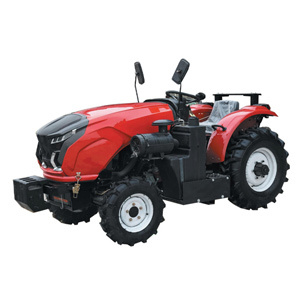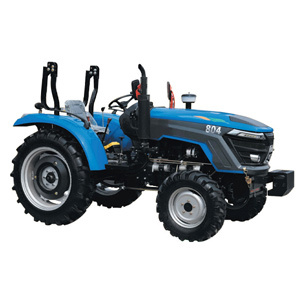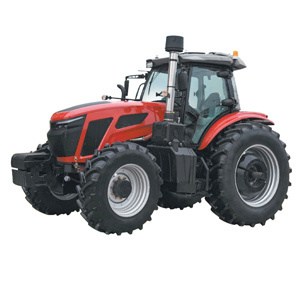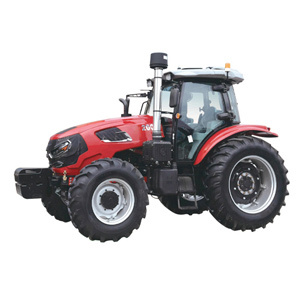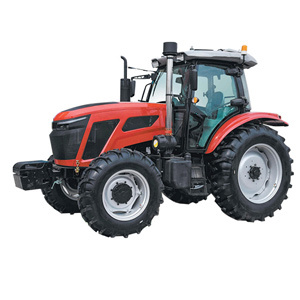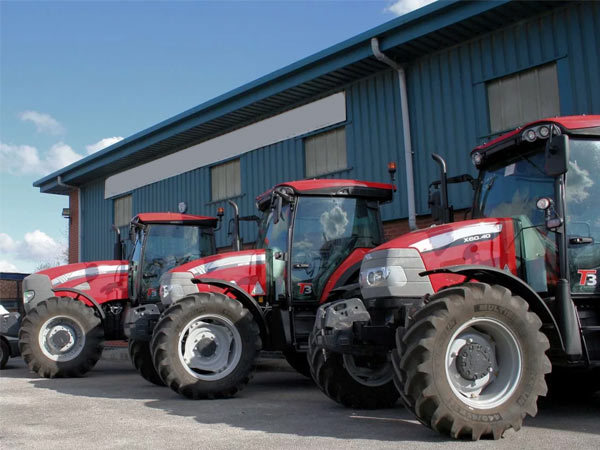Providing you with a one-stop solution for tractors
Read the Specs Right: The '3 Key Performance Indicators' You Must Check Before Buying a Tractor
Release time:
2025-10-29
Walking into a tractor purchase armed only with "horsepower" is like going into a negotiation without knowing your bottom line. While horsepower is important, it's just one piece of the puzzle. To make a truly informed decision and avoid costly mistakes, you need to focus on three fundamental performance indicators that directly determine a tractor's real-world capability: PTO Horsepower, Hydraulic Flow & Pressure, and Lift Capacity. Mastering these will empower you to cut through the marketing jargon and choose the perfect machine for your needs.
Hard Indicator #1: PTO Horsepower – The Heart of Implement Performance
While engine horsepower (HP) gets all the attention, Power Take-Off (PTO) Horsepower is the true measure of power you can actually use.
What It Is: The amount of power delivered to the PTO shaft to drive implements like balers, mowers, sprayers, and generators.
Why It's Critical: If your work heavily relies on PTO-driven equipment, this is your single most important spec. An underpowered PTO will lead to sluggish performance, implement stalling, and excessive wear. A tractor with a high engine HP but a low PTO HP is inefficient—you're paying for power that never reaches your implements.
How to Evaluate It:
Check the Official Spec Sheet: Look for the "PTO HP" or "PTO Power" rating. For most modern tractors, it should be around 85-90% of the engine's rated HP.
Match to Your Needs: Compare this number to the minimum PTO HP requirements of your most demanding PTO implement (check the implement's manual). Your tractor's PTO HP should exceed that requirement by a comfortable margin (e.g., 10-15%) for efficient operation.
Hard Indicator #2: Hydraulic Performance – The Lifeblood of Versatility
Hydraulics are what make a modern tractor a multi-tool. Don't just look at one number; you need both Flow Rate (GPM/LPM) and System Pressure (PSI/Bar).
What They Are:
Flow Rate: The volume of hydraulic fluid delivered per minute. This determines the speed of hydraulic functions—how fast a loader lifts, or a grapple opens and closes.
System Pressure: The force the hydraulic system can generate. This determines the power or "lifting force" of the system—how much weight a loader can hold, or the breaking force of a log splitter.
Why They're Critical: Together, they define the tractor's ability to run modern, high-performance attachments. Insufficient flow means slow, sluggish operation. Insufficient pressure means a lack of brute strength.
How to Evaluate Them:
Total Pump Flow: Look for the "Total Hydraulic Flow" spec. For loader work and running complex implements like a forestry winch or a potato harvester, a higher flow rate (e.g., 25+ GPM) is essential.
Pressure Rating: Standard is typically around 2500-3000 PSI (170-210 bar). Ensure this meets the requirements of any high-pressure attachments you plan to use.
Number of Valves: Plan for the future. Ensure the tractor has enough rear and front auxiliary hydraulic valves to operate all the simultaneous functions you need.
Hard Indicator #3: Lift Capacity – The Measure of brute Strength
This spec tells you exactly how much weight the tractor can handle at its hitch points. There are two key measurements: Three-Point Linkage Lift Capacity and Loader Lift Capacity (if equipped).
What It Is: The maximum force the hydraulic system can exert to lift an implement at the rear hitch or a load in the front loader.
Why It's Critical: This is a direct indicator of the tractor's structural strength and hydraulic muscle. Underspecifying here means you won't be able to handle heavy implements like full pallets of seed, large round balers, or loaded manure buckets safely. It also forces you to operate at the tractor's absolute limit, leading to accelerated wear and potential safety hazards.
How to Evaluate It:
Check the Official Rating: Look for the lift capacity at 24 inches behind the link arms (a standard measurement point). This is a more realistic number than the capacity right at the hitch.
Compare to Your Heaviest Implements: Know the weight of your heaviest rear implement and loader loads. Your tractor's rated capacity should be significantly higher to ensure safe and stable operation.
Loader Capacity: If a loader is planned, check its lift capacity to full height at the pivot pins, not just the breakout force.
RELATED BLOG

